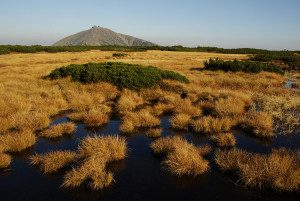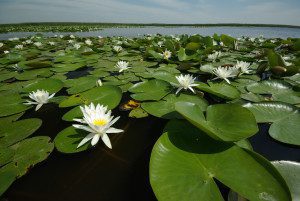EUROPARC Webinar – The EU Habitats Directive: from theory to practice
Krkonose National Park, Czech Republic © Kamila Antošová
EUROPARC WEBINAR
The EU Habitats Directive: from theory to practice
14th February 2017 from 16:00 to 17:15 CET(Central Europe Time)
On this EUROPARC webinar, we will explore how the EU Policy is being implemented in Natura 2000 sites, with a special focus on the Habitats Directive. This Directive ensures the conservation of a wide range of rare, threatened or endemic animal and plant species.
During the webinar, we will look at an important tool, the Appropriate Assessment framework (Article 6.3-4 Habitats Directive) and share two case studies, from a Park perspective and from a Ministry level.
The webinar is jointly organised by EUROPARC Federation and EUROPARC Central and Eastern Europe and will be moderated by Michael Hošek, Coordinator of the Section and who sits as the EUROPARC representative on the EU Commission’s Expert Group on the Management of Natura 2000.
Michael was in charge of the Natura 2000 implementation in Czech Republic between 2005-2013 and has been still active in the topic not only in the EU countries, but also in the EU candidate and associated countries.
How to join?
Case Study 1 – A hundred times nothing killed the donkey

Krkonose National Park, Czech Republic © Kamila Antošová
The title of the case study is a Czech proverb describing the situation when a considerable change is a result of gradual (and often long-term) accumulation of many negligible changes. Mountain meadows in SCI Krkonoše are metaphorically the donkey from the proverb.
Their area is being reduced steadily and considerably by house-building. Individual houses are usually small, they do not concentrate in large areas and the total area of meadows is still large. Therefore, it is difficult to convince public about the necessity of appropriate regulation.
The case study shows (i) basic facts about the area reduction of mountain meadows in the SCI Krkonoše and (ii) methodological approach of its regulation in the frame of Appropriate Assessment.
Case Study 2 – The Appropriate Assessment in Hungary
by András Schmidt, Ministry of Agriculture, Hungary

Hortobagy National Park, Hungary © Gábor Kovacs
How is Hungary following the Appropriate Assessment?
The presentation aims to give an overview of how Article 6(3)-(4) of the Habitats Directive has been transposed into Hungarian legislation and into the authoritative system of Hungary. It will also summarise the story of two cases when Hungary requested the opinion of the European Commission under Article 6(4) of the Habitats Directive. One case concerns a SAC, the other case occurred in a SAC which is also a national park.
More information about the Article 6
The Article 6 is one of the most important in the Habitats Directive, as it defines how Natura 2000 sites are managed and protected by:
– requiring the Member States to take appropriate conservation measures and avoid activities that can damage habitats;
– laying down the procedure to be followed when planning new developments that might affect a Natura 2000 site.